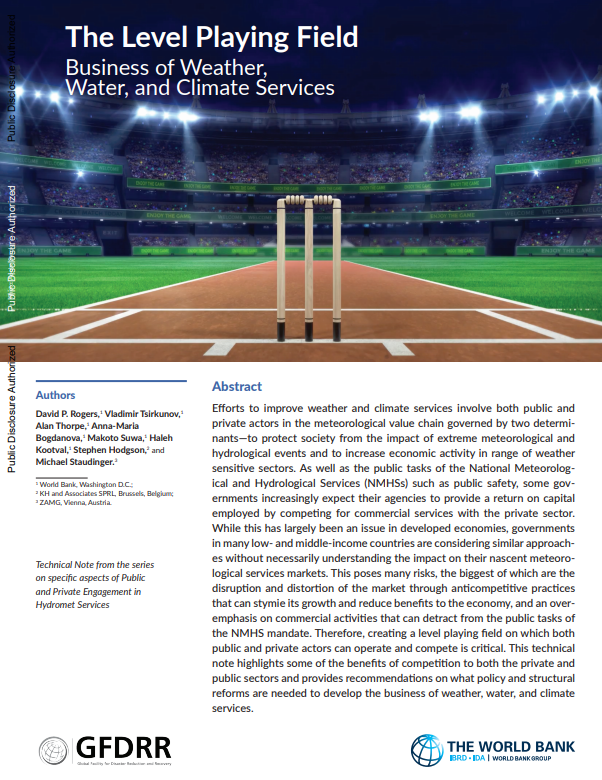Efforts to improve weather and climate services involve both public and private actors in the meteorological value chain governed by two determinants, to protect society from the impact of extreme meteorological and hydrological events and to increase economic activity in range of weather sensitive sectors. As well as the public tasks of the National Meteorological and Hydrological Services (NMHSs) such as public safety, some governments increasingly expect their agencies to provide a return on capital employed by competing for commercial services with the private sector. While this has largely been an issue in developed economies, governments in many low- and middle-income countries are considering similar approaches without necessarily understanding the impact on their nascent meteorological services markets. This poses many risks, the biggest of which are the disruption and distortion of the market through anticompetitive practices that can stymie its growth and reduce benefits to the economy, and an overemphasis on commercial activities that can detract from the public tasks of the NMHS mandate. Therefore, creating a level playing field on which both public and private actors can operate and compete is critical. This technical note highlights some of the benefits of competition to both the private and public sectors and provides recommendations on what policy and structural reforms are needed to develop the business of weather, water, and climate services.
The Level Playing Field: Business of Weather, Water, and Climate Services
May 26, 2021 Read this publication

